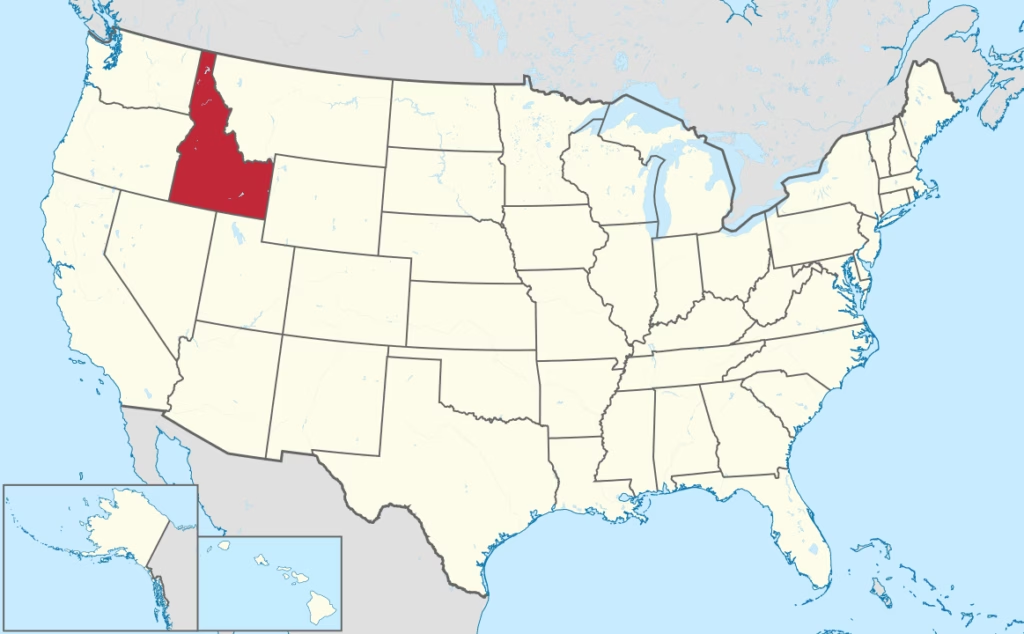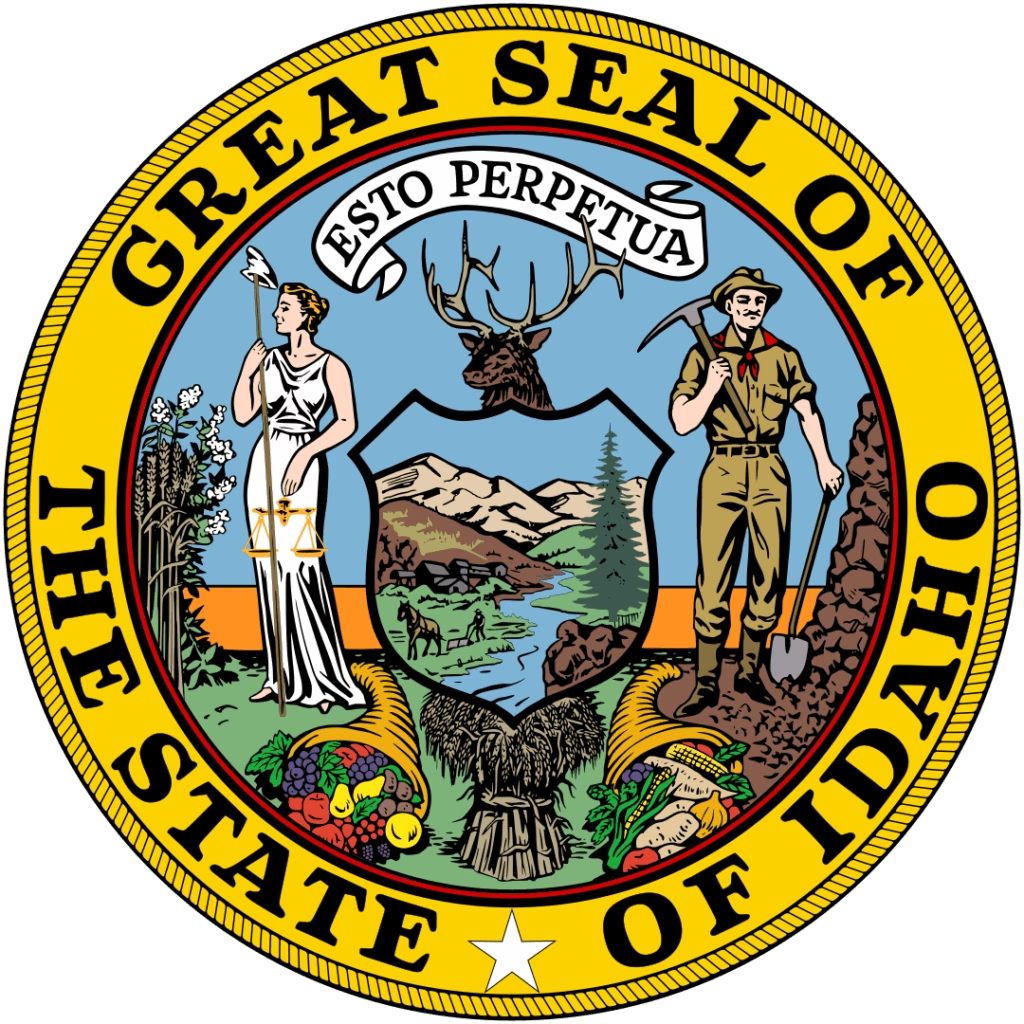Idaho, known as the Gem State, is a unique and fascinating state located in the northwestern region of the United States. With its breathtaking natural beauty, rich history, diverse economy, and vibrant culture, Idaho offers an abundance of educational insights for students learning about U.S. geography and civics. In this article, we will explore Idaho’s location, physical geography, history, state symbols, population, economy, and major cities, as well as its contributions to agriculture, energy, and outdoor recreation.
Geographic Location and Natural Features of Idaho
Idaho is bordered by six states: Washington and Oregon to the west, Nevada and Utah to the south, Montana and Wyoming to the east, and the Canadian province of British Columbia to the north. Its irregular, panhandle shape stretches approximately 479 miles from north to south and covers over 83,000 square miles, making it the 14th largest state by area in the United States.
Idaho’s topography is incredibly diverse. The state features towering mountain ranges such as the Rocky Mountains, the Bitterroot Range, and the Sawtooth Mountains. It is home to vast forests, fertile valleys, high desert plains, and over 3,100 miles of rivers, more than any other state. The Snake River, Idaho’s longest river, plays a central role in the state’s agriculture and hydroelectric power generation.
One of Idaho’s most famous natural landmarks is Craters of the Moon National Monument, a vast lava field that resembles a lunar landscape. Another notable site is Shoshone Falls, sometimes called the “Niagara of the West,” which is even taller than Niagara Falls.
A Brief History of Idaho
Native American Roots
Long before European settlers arrived, Idaho was inhabited by various Native American tribes, including the Nez Perce, Shoshone-Bannock, and Coeur d’Alene peoples. These tribes lived in harmony with the land, relying on fishing, hunting, and seasonal migration.
Exploration and Settlement
The Lewis and Clark Expedition passed through what is now northern Idaho in 1805, marking the first time European Americans explored the area. In the decades that followed, trappers, fur traders, and missionaries established a presence in the region. Idaho became part of the Oregon Territory in 1848, and later the Washington Territory.
Becoming a State
Idaho became an official U.S. territory in 1863 and experienced rapid population growth due to gold and silver mining booms. On July 3, 1890, Idaho was admitted to the Union as the 43rd state.
Idaho State Symbols and Facts
Understanding a state’s symbols helps students connect with its culture and identity. Here are some of Idaho’s official state symbols:
- State Nickname: The Gem State
- State Capital: Boise
- State Bird: Mountain Bluebird
- State Flower: Syringa
- State Tree: Western White Pine
- State Gem: Star Garnet (found only in Idaho and India)
- Motto: “Esto Perpetua” (Let it be perpetual)
These symbols reflect Idaho’s natural beauty, geographic uniqueness, and historical roots.
Population and Demographics
As of the 2020 U.S. Census, Idaho’s population was approximately 1.8 million people, making it one of the less populous states. However, it has been one of the fastest-growing states in recent years, especially around the capital city, Boise. The population is primarily white (non-Hispanic), but Idaho is also home to growing Hispanic, Native American, and Asian communities.
Most Idahoans live in the southern part of the state, particularly in the Treasure Valley region, which includes Boise, Nampa, and Meridian. The northern “panhandle” region is less populated but rich in natural beauty and tourism.
Boise: Idaho’s Capital and Largest City
Boise (pronounced BOY-see) is the capital and largest city of Idaho. Located along the Boise River and at the foothills of the Rocky Mountains, Boise is a hub of government, education, technology, and culture. It is home to Boise State University, known for its iconic blue football field.
Boise is also one of the most livable cities in the U.S., offering outdoor recreation, a thriving arts scene, and a strong economy. The city’s Greenbelt, a 25-mile pathway along the river, connects parks, neighborhoods, and natural areas, promoting sustainability and active lifestyles.
Idaho’s Economy: Agriculture, Technology, and More
Agriculture
Idaho has a strong agricultural tradition and is one of the top farming states in the U.S. It is best known for its potatoes—the state produces about one-third of the nation’s supply. Idaho potatoes are famous worldwide for their quality and are a symbol of the state’s agricultural success.
Other important crops include wheat, barley, sugar beets, hops, hay, and beans. Idaho is also a leading producer of dairy products, particularly milk and cheese.
Technology and Industry
In recent years, Idaho has developed a growing tech sector, particularly in Boise and its surrounding areas. Companies like Micron Technology, a global leader in semiconductor manufacturing, are headquartered in the state. The presence of a skilled workforce, low operating costs, and business-friendly policies has made Idaho attractive to startups and established tech companies alike.
Energy and Natural Resources
Idaho is rich in natural resources. It generates a large portion of its electricity from hydropower, thanks to its many rivers and dams. The state is also exploring wind, solar, and geothermal energy sources.
Mining remains an important industry as well. Gold, silver, phosphate, and molybdenum are among the minerals extracted in Idaho.
Tourism and Outdoor Recreation in Idaho
Idaho’s natural beauty makes it a prime destination for tourists and outdoor enthusiasts. The state offers year-round recreational opportunities such as:
- Skiing and snowboarding in resorts like Sun Valley
- Hiking and camping in national forests and wilderness areas
- Whitewater rafting in the Salmon and Payette Rivers
- Fishing and hunting in pristine landscapes
- Scenic drives and road trips through places like the Sawtooth Scenic Byway and Hells Canyon
Hells Canyon, which lies along the Oregon border, is the deepest river gorge in North America—deeper even than the Grand Canyon.
Education and Higher Learning in Idaho
Idaho’s educational system includes public, charter, and private schools. The state places emphasis on improving graduation rates and preparing students for college and careers.
Notable institutions of higher education in Idaho include:
- Boise State University – Located in Boise; known for innovation and business programs
- University of Idaho – Located in Moscow; Idaho’s land-grant university with strong research and engineering programs
- Idaho State University – Based in Pocatello; offers a wide range of health science and technical programs
- College of Idaho – A private liberal arts college in Caldwell
These institutions contribute significantly to the state’s economy and workforce development.
Cultural Aspects and Events in Idaho
Idaho’s culture is shaped by its Western roots, Native American heritage, immigrant communities, and modern influences. The state hosts several events and festivals throughout the year, including:
- The Western Idaho Fair in Boise
- Art in the Park – a celebration of visual arts
- Trails Days and Mountain Man Rendezvous – reflecting frontier history
- Treefort Music Fest – an indie music and tech event in Boise
Additionally, the Basque community in Boise is one of the largest outside of Spain, and its traditions are celebrated through festivals, food, and a dedicated cultural center.
Interesting Facts About Idaho
- Idaho has more wilderness areas than any other contiguous U.S. state, offering unparalleled opportunities for nature exploration.
- Lake Pend Oreille is Idaho’s largest and deepest lake.
- Idaho’s state seal is the only one designed by a woman—Emma Edwards Green in 1891.
- The Idaho State Capitol is the only one in the U.S. heated by geothermal water from underground hot springs.
- The Sacagawea Historic Byway commemorates the Shoshone woman who helped guide Lewis and Clark through the region.
Why Study Idaho?
Learning about Idaho is essential for understanding the diversity of the United States. From its role in westward expansion to its innovations in agriculture and technology, Idaho offers valuable lessons in geography, history, economics, and civics.
For high school students, Idaho presents a rich example of how natural resources, cultural heritage, and modern development intersect. Whether you’re studying U.S. states, researching energy policy, or learning about Native American tribes, Idaho has something meaningful to offer.
Conclusion
Idaho may be one of the more overlooked states in popular media, but its importance cannot be overstated. With its dramatic landscapes, pioneering spirit, agricultural power, and rising economic significance, the Gem State lives up to its name. Students who explore Idaho’s story will not only learn about a state—they’ll gain insight into the complex tapestry that makes up the United States.
From its rugged mountains to its innovative cities, Idaho is a true American treasure—and a perfect topic for deeper educational exploration.



